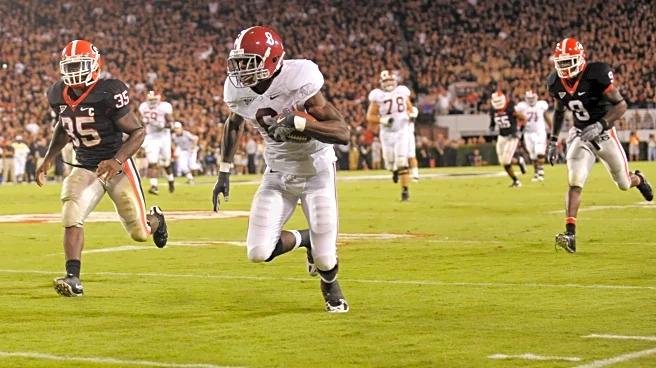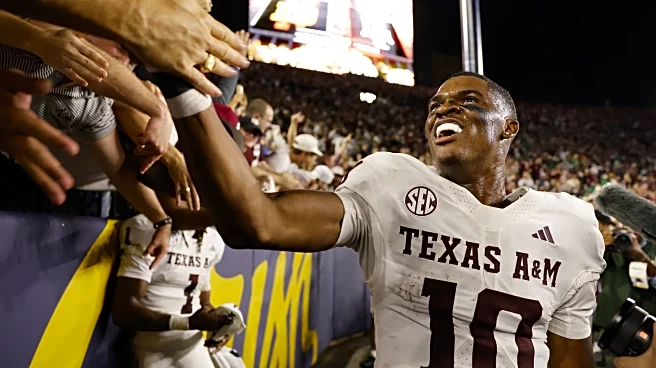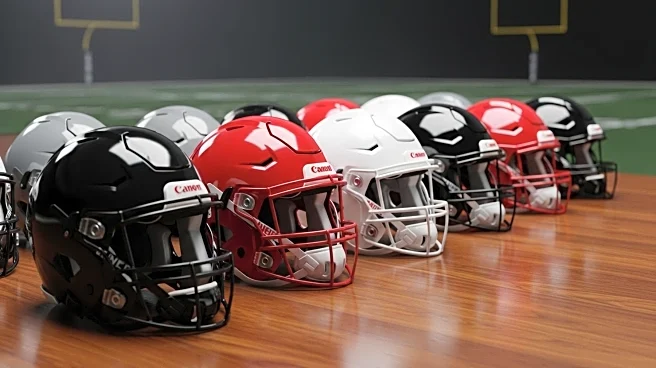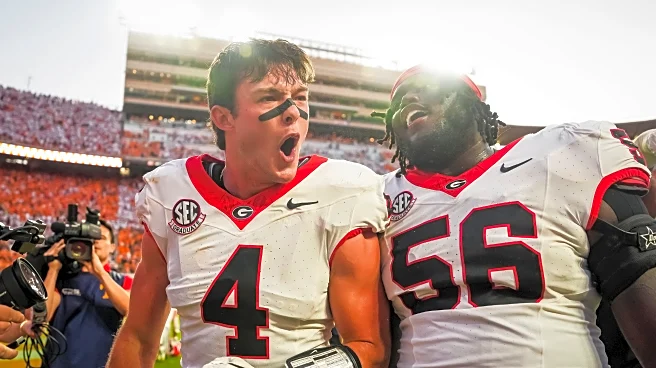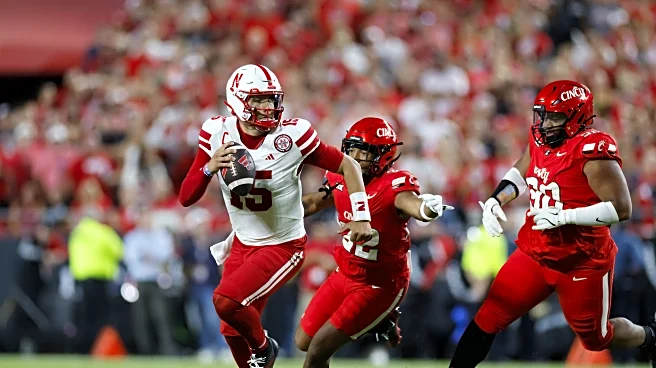What's Happening?
Jackson Arnold, the quarterback for Oklahoma, is contemplating entering the transfer portal following a challenging season. Arnold's second year in Norman has been marked by significant difficulties, including being benched in the fourth game, the firing of his offensive coordinator, and enduring 34 sacks due to an injury-plagued offensive line. The fanbase, once hopeful about Arnold's potential, is now eager for new prospects in the transfer portal. This situation has led Arnold to discuss his future with his family, considering the possibility of transferring to another program.
Why It's Important?
Arnold's potential transfer is significant for Oklahoma's football program, which is currently facing instability and performance issues. His departure could further impact the team's dynamics and recruitment strategies, as they may need to find a replacement who can lead the team effectively. For Arnold, transferring could offer a fresh start and an opportunity to play in a more stable environment, potentially enhancing his career prospects. The decision also reflects broader challenges within college football, where player transfers are increasingly common due to coaching changes and team performance issues.
What's Next?
If Arnold decides to enter the transfer portal, Oklahoma will need to act quickly to secure a new quarterback, possibly looking at other players in the portal. The team's management will likely focus on rebuilding the offensive line to prevent future issues. Arnold's decision could also influence other players considering transfers, as they weigh their options in light of team performance and personal career goals. The outcome of Arnold's decision will be closely watched by fans and analysts, as it could signal broader changes within the program.
Beyond the Headlines
Arnold's situation highlights the pressures faced by college athletes, who must navigate team dynamics, coaching changes, and fan expectations. The increasing trend of player transfers raises questions about the stability of college programs and the impact on athlete development. It also underscores the importance of effective team management and support systems to retain talent and maintain performance levels.





